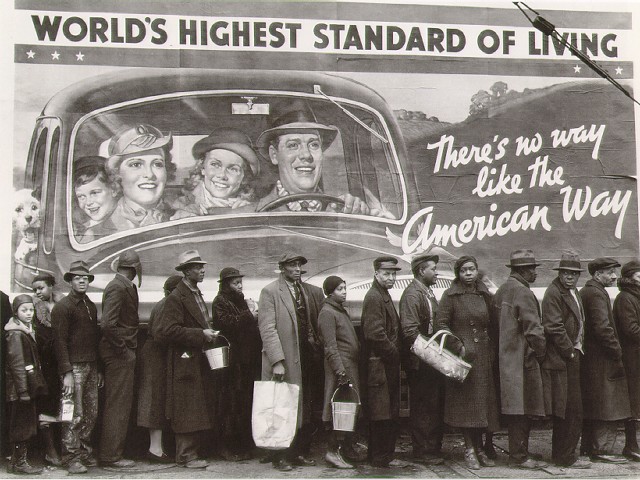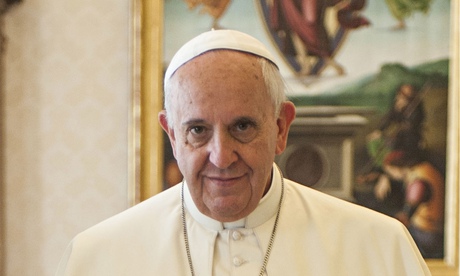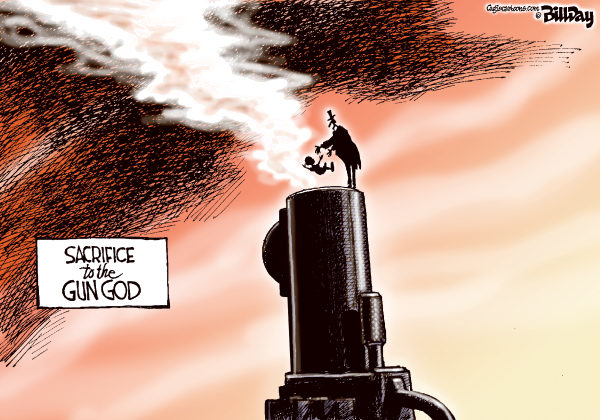![]()
Emergence of the Four Gospel Canon
Dozens of gospels circulated in early Christian communities. How were the four now contained in the New Testament chosen?
The Harrington Spear Paine Foundation Professor of Religion Princeton University
EMERGENCE OF THE CANON
![]() In the earliest Christian movement, there were actually many different writings circulated, and many traditions about the sayings of Jesus. Some of the leaders were concerned to say, "Well, which of these writings can be read in church? Which are the right ones? Which are the best ones?" And Irenaeus, the leader of a church in France in about the year 170, declared that "The heretics boast that they have many more gospels than there really are. But really they don't have any gospels that aren't full of blasphemy. There actually are only four authentic gospels. And this is obviously true because there are four corners of the universe and there are four principal winds, and therefore there can be only four gospels that are authentic. These, besides, are written by Jesus' true followers."
In the earliest Christian movement, there were actually many different writings circulated, and many traditions about the sayings of Jesus. Some of the leaders were concerned to say, "Well, which of these writings can be read in church? Which are the right ones? Which are the best ones?" And Irenaeus, the leader of a church in France in about the year 170, declared that "The heretics boast that they have many more gospels than there really are. But really they don't have any gospels that aren't full of blasphemy. There actually are only four authentic gospels. And this is obviously true because there are four corners of the universe and there are four principal winds, and therefore there can be only four gospels that are authentic. These, besides, are written by Jesus' true followers."
Now, today, scholars of the New Testament wouldn't agree with Irenaeus, because we don't know who wrote the gospels we callMatthew, Mark, Luke andJohn, any more than we know who wrote the Gospel of Thomas. They're all attributed to disciples of Jesus, but we don't really know who wrote them. And we don't know whether they came as the earliest sources or not. In fact, chances are they didn't. But they did present views of Jesus, which make him very important and make the institutional church [central].... The gospels of the New Testament, of course, have a lot of differences among themselves. But they're all similar in that they all see Jesus as the pivotal person, the one on whom everything depends, the Messiah, the Savior, the Lord. These other gospels, many of them, see Jesus as a teacher, as a kind of figure of enlightenment, a kind of bodhisattva figure, but one whom you and I could emulate, whom we could perhaps become. And that's a very different kind of emphasis. I think the gospels of the New Testament were chosen because they do share this conviction of the importance and uniqueness of Jesus, which also becomes the importance and uniqueness of the church as the only means of salvation. That is, the church that called itself "catholic," which means simply universal, claims to be the only access to salvation there is. If you're not a member of that church, leaders of that church have claimed from the first century until now, you are outside, you are perhaps consigned to damnation. Professor of Classics and Director of the Religious Studies Program University of Texas at Austin
A PROLIFERATION OF GOSPELS
So, if there were so many bibles, how come there are only sort of four gospels included in the New Testament? How did that happen?
The process of the development of the canon; that is, the bible itself as the normative document in the way that we now have it, is really a product of the second and third century use of the gospels tradition. Now, from early on, of course, we have the four main gospels that we now see in the New Testament; Matthew, Mark, Luke, and John, but there were many others that we know existed. There's the Gospel of Peter and the Gospel of Thomas, each of which may go back to a very early tradition. There's the Q document; the source, the saying source that underlies the gospels of Matthew and Luke. It's now lost but obviously it was known at one time, and it, too, is very early, probably dating as early as the 50's of the first century.
In the second and third century, we know that there were many other gospels that were developed. We have a charming array of popular kinds of stories of the life of Jesus. There's baby Jesus stories; the infancy Gospel of Thomas is one of these where you have the stories of the little child Jesus performing all sorts of miracles. And obviously these are developing out of a kind of what we might call popular interest. You can imagine the stories of Jesus developing in a lot of ways much like any famous figure. I mean, let's think of a Superman character. Once you know that Superman's a great guy, what was he like as a child; the same thing happens with Jesus. Baby Jesus stories are one of these, and we get some wonderful little legends that develop this way.
We also hear of other kinds of gospels that develop. Stories of the birth that tell you in lurid detail, really, how true it really was or how marvelous and miraculous it was; stores of apostles traveling to all kinds of strange lands; Thomas, who goes to India; Andrew, who goes out to some strange world, and so on. These kinds of stories proliferate through the second and third century. There's a burgeoning Christian literature, and in some ways, I think we have to look at it as if it were really taking over the market, in a literary sense, of the popular imagination of the second and third centuries.
![]() At the same time, this burgeoning literature, ... even when it's used for local traditions or is, for example, the official gospel of a particular church, also presents a problem because if there's only one Jesus, how can there be all these different gospels? And when you look at them all, even the four gospels in the New Testament, not to mention all these other kinds of things that we read; when you look at them all, you really see that there are rather different portrayals of Jesus that come out of them. There's a different image in each different tradition. So, the proliferation of the gospels on the one hand reflects the growth and the kind of upsurge of popularity of Christianity. On the other hand, it produces a dilemma; how can there be so many gospels when there's only one Jesus? And this is even a problem that faces the development of the New Testament canon itself. If there's only one Jesus, why even four gospels, why not just one?
At the same time, this burgeoning literature, ... even when it's used for local traditions or is, for example, the official gospel of a particular church, also presents a problem because if there's only one Jesus, how can there be all these different gospels? And when you look at them all, even the four gospels in the New Testament, not to mention all these other kinds of things that we read; when you look at them all, you really see that there are rather different portrayals of Jesus that come out of them. There's a different image in each different tradition. So, the proliferation of the gospels on the one hand reflects the growth and the kind of upsurge of popularity of Christianity. On the other hand, it produces a dilemma; how can there be so many gospels when there's only one Jesus? And this is even a problem that faces the development of the New Testament canon itself. If there's only one Jesus, why even four gospels, why not just one?
So, by the late second and early third century, we're starting to face this problem. We hear of people who want to harmonize all the gospels into just one story. We actually have a document called the diatessaron, produced by a Syrian Christian theologian by the name of Tatian, and the diatessaron means "through the four;" he weaves the four gospels together into one, single narrative, and it produces some interesting effects with the story when he does so. In fact, it's so much of a problem that he puts them together that way, that people begin to worry too much if you do that.
So, on the one hand, one gospel is too few, but the other possibility is you could throw three of them out.... But if one is too few and you can't fuse them all together, how many is too many? And finally the answer comes down that four is the right number, and we have this writer by the name is Irenaeus, Bishop of Lyon, in Gaul, modern day France, who around the year 180 says that no, the number of the gospels is properly four; these are the earliest, these are the best, but four is the right number.
John Carlisle Kilgo Professor of Religion and Director of the Graduate Program in Religion Duke University
IRENAEUS AND THE HERETICS
Who is Irenaeus and what was bugging him?
Irenaeus was a Bishop of Lyon in what today would be France in the later second century.... [He] was particularly noted for his writings in which he tried to combat various kinds of so-called heretics of the second century. Most of these were people who would consider themselves Christians. In fact some of these heretics such as Marcion and Valentinus clearly thought that they were better Christians and higher kinds of Christians than ordinary run of the mill Christians in the catholic churches. Irenaeus took it upon himself to expose these different kinds of so-called heresies, people that had chosen wrong ways of thinking about Christianity, from his point of view. In an enormous book called "Against Heresies" in which he outlined all the difficulties, particularly, he said, many of these heretics decried the created order. They thought the material world was bad. They didn't honor the God of the Old Testament who was represented as a creator. They didn't honor the law that God gave in the Hebrew Bible, and in fact that does seem to be the case with some of these so-called heretics. They themselves, however, certainly thought of themselves as being truer and higher kinds of Christians who had gone beyond much of what the Hebrew Bible said and were now into a different stage.... So what you really have here I think is a kind of in-group Christian fighting over the who has the purer, truer kind of Christianity.
Why did it worry him that there were different interpretations?
Irenaeus was very concerned to say there's one kind of Christianity which has come down from the time of the New Testament and been preserved through the bishops.... You could say Irenaeus was no postmodernist. He did not think there were many approaches to truth or many kinds of truths in the plural. There was one truth that he thought had been given in ... the creed of the church such as it had developed at that time and was preserved by bishops in their teaching authority, so he was not willing to admit that there could be these varieties of Christianity all of which were true.
THE DETERMINATION OF THE CANON
In the second and third century we know now there were any number of gospels which had names of apostles appended to them. There were also acts or also with names of apostles appended to them so you have The Acts of Paul, The Acts of Thomas and so forth. ... these circulated quite freely in the church and Christians for a while probably used these ... somewhat indiscriminately; it's only a little bit later ... you begin to have people objecting, "don't use this one, don't use that one". ... It may surprise people to know that it's really not until the year 367 that we have a list of New Testament books that conforms exactly to the list of the twenty-seven books we would call the New Testament today. So throughout the second and third centuries there was quite a lot of fighting about which ones are in and which ones not. I think there was general agreement quite early Matthew, Mark, Luke and John, the Letters of Paulwere safely in, but there was fighting about books like Jude and Second Peter. Certainly the book of Revelation was fought about a lot. The apocalyptic tone of that work was not very suitable in the eyes of some Christians a little bit later on.... ![]() Irenaeus doesn't like the idea that there are many gospels circulating with different accounts about Jesus, particularly a number of these accounts [which] rather down-play the materiality and physicality of Jesus' body. They stress the kind of miracles that Jesus, as a little child, performed, and Irenaeus thinks if we just stick to the gospels -- Matthew, Mark, Luke and John, we will have a more historical, we might say, account of Jesus. I think also what's at stake here though too, is that the Catholic Church, which Irenaeus represents, is in competition with groups, like the followers of Valentinus and the followers of Marcion, who were not inconsiderable threats in the 2nd century. So this is a kind of campaign about who has the best and right form of Christianity....
Irenaeus doesn't like the idea that there are many gospels circulating with different accounts about Jesus, particularly a number of these accounts [which] rather down-play the materiality and physicality of Jesus' body. They stress the kind of miracles that Jesus, as a little child, performed, and Irenaeus thinks if we just stick to the gospels -- Matthew, Mark, Luke and John, we will have a more historical, we might say, account of Jesus. I think also what's at stake here though too, is that the Catholic Church, which Irenaeus represents, is in competition with groups, like the followers of Valentinus and the followers of Marcion, who were not inconsiderable threats in the 2nd century. So this is a kind of campaign about who has the best and right form of Christianity....
Who decided exactly what got in and what was left out? What was excluded? What was suppressed?
It's hard to say.... We do have a document called the Muratorian Canon ... which tells us that one of the criteria for deciding whether a book is scripture or not is whether it can be read in the church. Now, this seems to be rather a circular argument, because you probably don't read it in the church unless you think it's scripture, but there seems to be something about suitability for public reading during worship, that's one criterion. The churchmen who argued about these points of what's in and what's out... [also] wanted to say if we know a book was supposedly written by an Apostle or by a follower of an Apostle, this gave it some authenticity. This was an attempt to say, "We're as close back with eyewitness reporting as we can be."
FROM MANY GOSPELS TO FOUR
![]() The diversity of Christianity is certainly closely related to the proliferation of gospels. Even the gospels which we have in the canon of the New Testament are not of one mind, but really represent very different religious positions and very different images of Jesus. You go beyond this, we have the Gospel of Thomas, which again is a very different image of Jesus as the revealer of the divine truth about the ultimate human self than we find in Mark, or in Matthew. We have numerous fragments of other gospels, which sometimes we only know they existed, but cannot really say what they [said].
The diversity of Christianity is certainly closely related to the proliferation of gospels. Even the gospels which we have in the canon of the New Testament are not of one mind, but really represent very different religious positions and very different images of Jesus. You go beyond this, we have the Gospel of Thomas, which again is a very different image of Jesus as the revealer of the divine truth about the ultimate human self than we find in Mark, or in Matthew. We have numerous fragments of other gospels, which sometimes we only know they existed, but cannot really say what they [said].
So the question of establishing some authority in terms of gospels, which gospels should be read and which should not be read, was discussed in the second century, especially after Marcion. Marcion lived in the first half of the second century. He was a wealthy ship owner and ship merchant. He came from northern Turkey... to Rome and he gave the Roman Church a lot of money, and they welcomed him with open arms. But he felt that the original Christian gospel was no longer preserved, and he thought that only the apostle Paul had the true gospel. And he set out to find this true gospel, and he took the Gospel of Luke and purified it from whatever he thought was Jewish and said, "This should be the scripture for the church, and this should be the only scripture for the church." And the Roman church became very suspicious of his manipulations with the Gospel of Mark. It is reported that they gave the money back to him and said, "Thank you very much, but we don't want you and your gospel...."
But the church really had to think at that point, what should they do with the many gospels on hand. And with new editions of the gospels which were coming out all the time. Right after Marcion, we have evidence from Rome that some other people sat down and wrote a new harmony of the gospels of Matthew and Mark and Luke, melding them together into one gospel. Now in that situation we have apparently a recourse to the original function of gospel narrative which is the narrative of Jesus' suffering and death as the story that accompanies the celebration of the central Christian ritual, the Eucharist. And that meant that only gospels who have a passion narrative can be included. The Gospel of Thomas does not have a passion narrative. And it was never discussed for possible inclusion. It is characteristic that all gospels of the canon have a passion narrative because the central Christian ritual, that's the Eucharist, cannot live without that story. And it is out of that movement that the four gospel canon arises. And it comes, interestingly enough, as a canon that preserves diversity, within limits.... There is no claim that this canon represents four gospels that are all saying the same thing. It is rather an attempt to bring together as many Christian communities that were bound to a particular gospel into one major church. And this was essentially accomplished through the four gospel canon.
The Lillian Claus Professor of New Testament Yale Divinity School
SYMBOLS OF THE GOSPELS
![]() Some of the symbols that Irenaeus uses of the gospels have come to be quite traditional and quite influential in the the symbolism associated with the gospels. So the ox, the lion, the winged man and the eagle that [are] used for the evangelists in many contexts, both artistic and literary, go back to Irenaeus.
Some of the symbols that Irenaeus uses of the gospels have come to be quite traditional and quite influential in the the symbolism associated with the gospels. So the ox, the lion, the winged man and the eagle that [are] used for the evangelists in many contexts, both artistic and literary, go back to Irenaeus.The eagle is the usual symbol for the Gospel of John, because his thought is so lofty and it flies so high. And the ox is the symbol of the third gospel, the gospel according to Luke, perhaps because of the way in which Jesus is presented as as someone born in a manger. It's unclear exactly why but that's certainly an element. The man with wings is associated with the Gospel of Matthew. And this may go back to traditions about Matthew having some sort of angelic assistance in the composition of his gospel.... Mark is symbolized by the lion, it's unclear why, but perhaps because the lion is a symbol of Jesus in the book of Revelation. And Mark does have connections with an apocalyptic view of Jesus.
POLITICS BEHIND THE CANON
I think the composition of a four-fold gospel canon reflects complicated developments during the course of the second century. One of the factors that played a role here certainly was the fact that certain gospels were revered in certain ecclesiastical centers, so it may be that Antioch had a special affection for the Gospel of Luke. We don't know that for a fact, but this is certainly an element in the development of the gospel canon. So as the centers got together and wanted to share fellowship and shared their readings, it would have been important for them to recognize one another's principle texts. There may also have been some theological issues that were being debated, and the use of certain texts in connection with those debates probably played a role in the recognition of those texts as authoritative. We know that that was the case with the Gospel of John; by the end of the second century there was a faction among the Roman church leadership that rejected the fourth gospel and said, "We ought not have it." They thought that perhaps there was a portrait of Jesus that compromised his humanity. And so the insistence upon the full humanity of Jesus would have been an issue in the acceptance of John as authoritative. So there were both some political and also some theological reasons that no doubt played a role. And then there were various other gospels that were not included within the fourfold canon that probably did not have the sponsorship of a major church, or had some feature to them that was particularly problematic from a theological point of view.
Associate Professor of New Testament, Harvard Divinity School
CANON EMERGES FROM CONSENSUS
Sometimes when the New Testament scholarship discusses the matter of canon formation, the story implied is that there are some smoke filled rooms somewhere in the 2nd century and a bunch of these cigar smoking Christian big shots got together and they decided who was going in and who was going out and then... it was a wrap, they closed up and then everything else was on the cutting room floor.... If we return to Irenaeus' argument for the canon, I think precisely the contrary is closer to a more responsible historical reconstruction, and that is that there's some kind of consensus among people in the Jesus movement as to what constitutes reliable tradition, reliable literature - literature that they want to read or they want to hear over and over again, and other kinds of literature that they don't want to hear. And, of course, there are groups that have differences of opinion about this. There's some discussion about certain books that can be read but can't be read in church, for example. You can read them on your own, but there's a kind of parental advisory on them or something, and you don't read them in church and you're careful when you read them by yourself, this kind of thing. Or there's some pieces of literature that a lot of people are reading but that the Grand Poobahs in the church don't want them to read. But these really constitute special cases that imply a kind of consensus that are formed very early about the kind of literature Christians used that spoke to their self-identification and by which, they in turn, identified themselves.... That's kind of touchy-feely; it's hard to get a get a historical fix on it, but it's got to have been there. That was a development... from the bottom up, as opposed to from the top down. In Irenaeus' voice, I think we're hearing some top down arguments ex-post facto.
![]()
Read more on the development of the canon in this essay by Marilyn Mellowes.












































